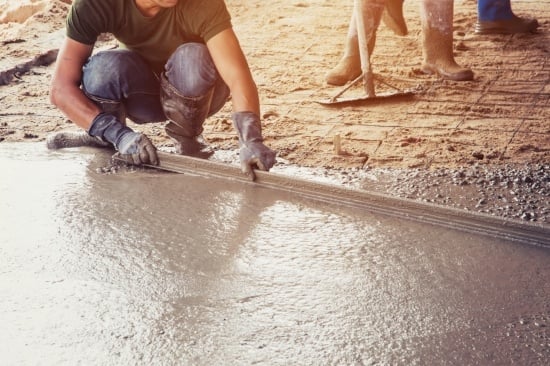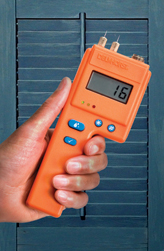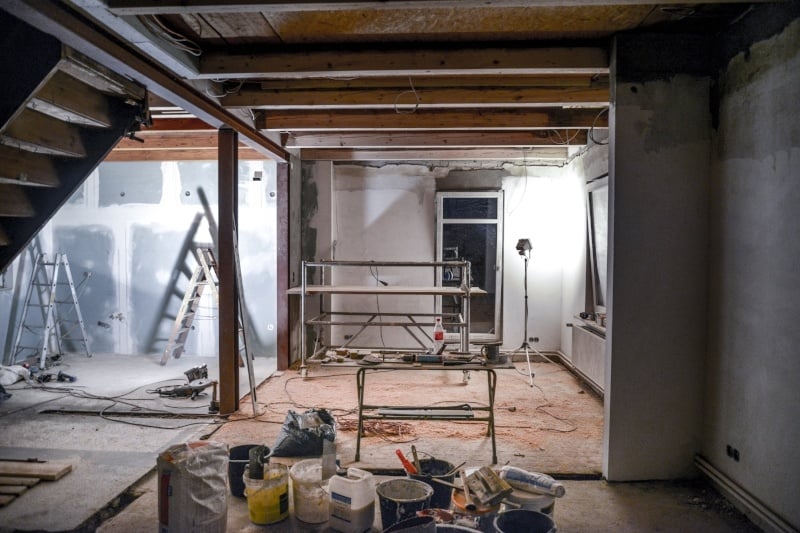Your Commercial Property Has Water Damage: Now What?

There are numerous situations where a commercial property might suffer extensive water damage. For example, a flood from a storm or overflowing river bank might deposit massive amounts of dirty water all over the first floor of a structure. Or, a burst/leaky pipe might cause water to collect in the spaces between the walls or floors in the structure, leading to mold growth and other issues in these hidden areas.
Whether it’s flood water damage or some other form of moisture intrusion, what should you do when the commercial property you’re inspecting has water damage?
Confirming the Extent of the Damage
One of the first things you’ll wwhen you discover signs of water damage is verify the extent of the damage. However, a simple visual check probably won’t be enough to reliably establish the full scope of the problem.
Water can soak into many building materials far from the source of the moisture intrusion without creating obvious signs of damage for a long time. So, to accurately establish how far the water has spread, you need a specialized tool for measuring moisture in building materials—such as a moisture meter for building inspection.
Using a moisture meter, you can measure the moisture content (%MC) of the materials near where you noticed the water damage. By continuing to make checks progressively farther from the site of the damage, you can establish how widespread the damage is as well as the severity of the moisture intrusion.
With this information, you’ll be able to determine whether you need to focus on drying out the affected materials, or simply tear them out so they can be replaced with undamaged materials.
Contacting a Water Damage Restoration Expert
If you’re inspecting your own property and do not have experience in water cleanup/restoration work, it may be a good idea to contact a water damage restoration expert to handle the task of dry-out/tear-out for you. This is because water damage remediation work can be too delicate or dangerous for someone without specialized experience or training to risk.
For example, a professional in water damage restoration is likely to have the right tools and experience to minimize their risks from hazards such as mold spores, exposure to fiberglass insulation, and weakened floors that may collapse—all of which are common hazards in water cleanup and restoration work. Additionally, an expert is more likely to be able to successfully complete dry-out tasks in a way that minimizes the overall damage and risk of future problems.
Trying to handle dry-out and tear-out work without the requisite training and experience can lead to problems—not the least of which is accidental injury from handling damaged building materials.
Drying Out the Affected Area
If you’re determined to handle the dry-out work personally, or the extent of the damage is especially minor, then it may be possible to remove the moisture causing the damage yourself.
However, you’ll need a few specialized tools to make sure you can completely dry out the area, including:
- Wet vacuums (to remove standing water quickly)
- Air movers and/or dehumidifiers (to extract humid air)
- A thermo-hygrometer (to track the humidity in a room)
- Pin and/or pinless moisture meters (to track the moisture content of building materials)
If the structure has a climate control system, then turning up the temperature slightly can help to keep water from condensing—allowing dry-out work to proceed just a bit faster.
When drying out a room in a building with flood damage, it’s important to keep the building as sealed against exposure to outside air as possible. Otherwise, mold spores and other contaminants can make their way inside and, with the help of the excess moisture in the structure, begin to proliferate. Any air movers attached to an opening should be sealed in place in such a way that they constantly force air out and prevent outside air from getting inside.
Any moisture-compromised furniture should be removed and assessed. If it is too water-damaged, it will need to be thrown out and replaced. The same goes for any building materials in the affected area.
Document Everything!
While you’re busy inspecting and trying to repair the damage to your commercial property, be sure to document as much as possible about the damage, its cause, and the steps needed to fix it. It’s good to do this because you may need to file an insurance claim for the cost of the repairs, and doing so without documentation could result in the claim being denied.
Having a moisture meter that can store readings with a date and time stamp, then transfer the stored data into an easily-presentable report on your computer can be immensely useful. This provides documentation about the extent of the water damage and when it was first inspected—making it a bit easier to prove an insurance claim.
Additionally, taking photographs of the damage can help to further establish proof of the water damage.
If materials or furniture pieces have to be thrown out, keep track of what is being disposed of as well. This may prove useful for determining the extent of your losses for the insurance claim. A water damage restoration expert will likely recommend that you collect thorough documentation as well, since it helps them get paid by the insurance company.
This, of course, assumes that you have an insurance policy on the commercial property that covers the costs of water damage. If your property doesn’t have such insurance, then the costs will have to come out of your pocket.
These are just some of the basic actions to take if your commercial property suffers water damage. While contacting a water damage restoration specialist is probably the best thing to do, following these simple steps should help you mitigate the damage somewhat. As a basic rule of thumb, if the damage is severe enough to warrant filing an insurance claim, then you should probably hire an expert in water damage cleanup.
Need to know more about how to handle water damage restoration tasks? Download Delmhorst’s Restoration Guide for free at the link below, or contact us directly to learn more about moisture meters for restoration.
Subscribe to Our Blog
Post Related

What Are Safe Moisture Levels in Concrete?


